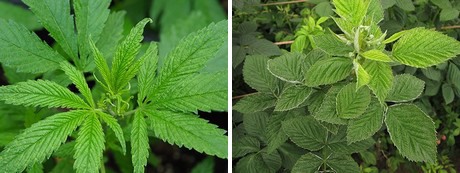Broad mites (Polyphagotarsonemus latus) prefer young plants and are typically found feeding on the newest growth. Active year-round in glasshouse crops, this tiny pest can cause plants to become deformed and stunted. Indeed, failure to control broad mites in time often leads to unmarketable plants, fruit discoloration and even fruit drop.
Sign & symptoms
Broad mite infestations should be taken seriously as feeding can lead to malformations in young leaves, growing tips and flower buds, as well as stunted growth, drooping leaves, plant fragility, discoloured fruit and coppering or purpling of leaves.

Severe mite infestations can result in premature fruit drop and even plant death. Overall plant health and quality is significantly diminished due to the toxins found in broad mite salvia. Symptoms of attack generally remain visible several weeks after the mites have been controlled.
Pest host range
Broad mites are found on many fruit, vegetable and ornamental crops grown in the tropics and can also be found in glasshouses in temperate regions. Common hosts include peppers, aubergine, cotton, citrus, avocado and guava.
What does it look like
Tiny and almost impossible to see with the naked eye, Broad mites are best viewed with a strong hand lens or microscope. Their eight-legged, swollen oval-shaped bodies can be amber, yellow or green.
The colourless elliptical eggs have tiny microscopic tufts giving them a speckled appearance. Meanwhile, immature mites are flattened, have only six legs at the earliest stage, and are slow moving.
Most broad mites are found on the undersides of young, expanding leaves.
Life cycle
Broad mite eggs are laid on the underside of leaves or in depressions on fruit. Hatching within 2-3 days, the mobile larvae begin feeding. Within a further 2-3 days, they develop into quiescent (sedentary, non-feeding) nymphs. Once the quiescent stage is complete, the females are carried off by mature males to new leaves where they mate and the life cycle starts again.

Interestingly, to aid dispersal, these mites often attach themselves to winged insects, such as whitefly.

Solutions
Broad mites can be effectively controlled employing an IPM programme combining Biobest products - Californicus-System, Andersoni-System, Swirskii-(Breeding)-System and Amblyseius-System - according to advice and rates from your local Biobest advisor.
 Biobest Belgium NV
Biobest Belgium NV